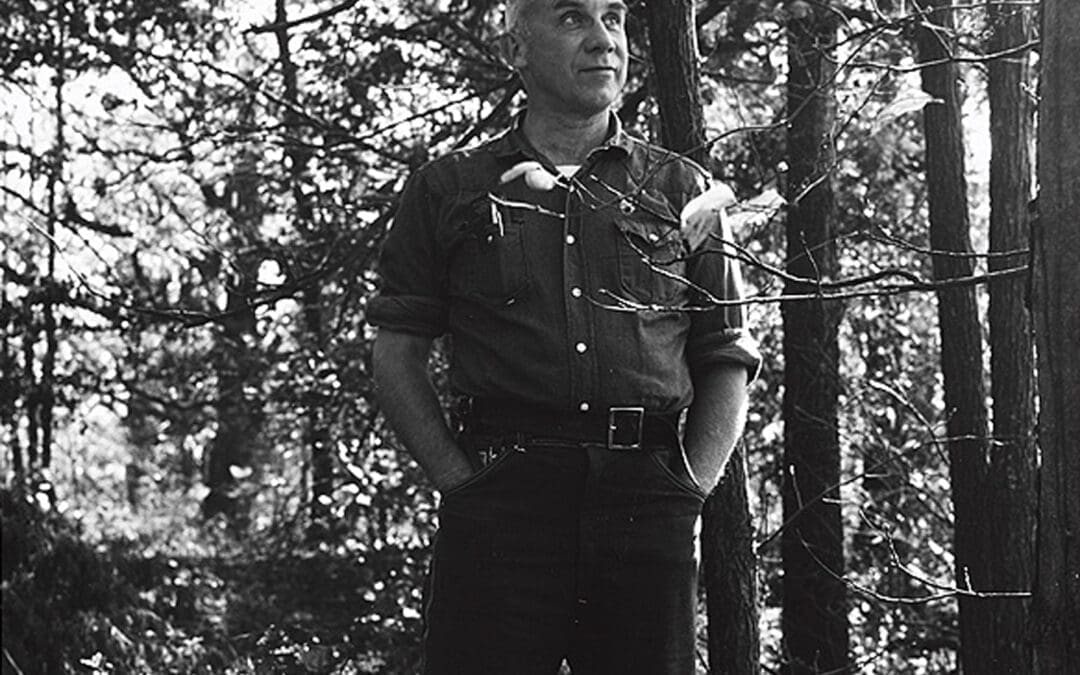 |
Christian Worthington’s Pieta hangs above the sanctuary in the Exchange Church, a converted storefront theatre in Winnipeg’s vibrantly artistic Exchange District and home to the artist himself. The painting surfaces from the shadows, its highlighted figures catching the candlelight and dwindling Sunday afternoon rays—an effect that momentarily transports the viewer back to the Baroque era. The exaggerated chiaroscuro is reminiscent of Rembrandt’s lighting, and yet there is something distinctively modern about this composition. The unusual but captivating balance of 17th century Northern Renaissance and 20th century Abstract Expressionism is Worthington’s signature style.
Worthington is a surprisingly young artist, with a deep, brooding expression and long Vitruvius-man hair. His serious demeanour easily dissolves into a disarming and boyish laugh, revealing an impish, youthful artist with a decidedly old soul.
As in his work, Worthington comes across as a juxtaposition of ideologies and style. He has a confident, self-effacing hubris, combines Converse sneakers with vintage cowboy shirts, and fuses ancient ideas with contemporary thought in his philosophy and artwork. He reads Heidegger and Gadamer, adores Bach, and could have easily assimilated into the Renaissance ateliers, yet he seems equally comfortable swapping stories at the Legion Hall and hosting epic loft parties for local hipsters.
With several local and international exhibitions under his belt, it is hard to believe this 32-year-old left art school and carved a career after only a few months of study. “I went to art school to build on what I already knew, but I kind of felt like they were trying to ‘start me over’ into their image of what an artist should be,” he explains. “I was interested in straight oil on canvas, but there, realism was just shunned. They said, ‘You can already do this; do something else!'”
 |
In lieu of formal studies, he travelled abroad and learned through observing the works of the masters in the world’s finest museums, including the Rijksmuseum, the Louvre, and the National Gallery of London. He continues to develop his technique as an oil painter by learning from the originals, his source of inspiration.
“You have to experience art through the lens of love, not just with a critical eye,” he says, with regard to the art school method of critique. “You can’t create art by democracy—especially if you have something very sincere and specific to say.”
He is particularly drawn to the works of Rembrandt and the 17th century Northern Renaissance, but is equally inspired by Rothko and the Abstract Expressionists. Rothko, he explains, was obsessed with Greek literature, but also spent a substantial amount of time considering his Jewish heritage. “Those artists in the 1940s and 50s thought a lot about those types of themes—what the old Masters were kind of doing. I think they thought they’d invented a language. In some ways, they did.”
Worthington’s portraits nod to Rembrandt, then surprise the viewer with a Rothko-esque colour field. “Look at Rembrandt’s backgrounds—take the figures out, and there are ‘Rothkos’ all over the place. Rothko didn’t do representational paintings, but he still included so much emotional connotation. You would think he was trying to escape subject, but he called his shapes ‘actors,’ like they were dancing or delivering lines.”
“But,” he adds with a laugh, “after years of reading German philosophy, I’ve come full circle. I feel almost childlike again. Like, ‘I just want to see a big yellow and blue painting—I think that’d be fun!'”
Attentive to today’s popular culture, he weaves contemporary ideas into his paintings while trying to be rooted in what he calls the “canon of Christian European art”. Worthington notes that artists like Rembrandt were dead serious about their work, lacking the irony of today’s contemporary art, and that this seriousness created a sophisticated language.
Such a language could easily be lost on today’s consumers, whose visual intelligence is rapidly adapting to a faster, technology-based art. It could seem counterproductive to spend months agonizing over a complicated oil painting when anybody with the right software could create and sell “art” online. This type of market ought to make it tough for an artist like Worthington, who lives solely off his paintings, to find buyers. Yet, he remains grounded in his work, and optimistic about his success in reaching his clientele.
“I remember the 90s, when multimedia and video art became huge,” he says about this competition. “Now, it seems like people have a yearning for the unique, for the original. I’m more optimistic, and I think more people appreciate art now than ever before, because of access to education, books, galleries, and the internet. A lot of artists are getting a lot of coverage as a result.”
 |
Still, Worthington’s work—which deals with European philosophies and religion, borrowing extensively from the entire history of painting—would seem a difficult sell in contemporary North America. One might wonder how he could possibly broaden his reach to people who may not be “literate” in this type of art.
Worthington maintains that the best way to interact with history is to appreciate it in the contemporary cultural context. “People see Virgin on the Rocks by Leonardo, but they don’t say, “Oh, but it’s a Christian painting! I’m not Christian! I can’t appreciate this!’ If you remove the sacred or the historicity of art, you don’t have much left.”
As a Christian, Worthington gives considerable thought to the decidedly controversial question of what “Christian art” ought to be. It has, after all, been a divisive topic in the church since Luther nailed the 95 Theses to the Wittenburg door in 1517. The inclusion of contemporary art and media has often preceded divisions in the modern church, in an endless debate over what type of art is acceptable for use in worship. Worthington maintains that the church can once again have great art on a large scale by making art an integral part of the faith.
Christian art has undergone a serious transformation since the days of Michelangelo, Titian, and Caravaggio. One need not look any further than Christian bookstores to find “clean” versions of painting and knick-knacks for sale. While such items still hold meaning in modern Christianity, there is still the question, Is it art? Worthington believes that Christians should avoid mimicking, then sanitizing, secular art.
“In some ways, I’ve always thought that all great art is religious—not specifically Christian or Islamic or Buddhist, or so on—it just seems like all great art contains a sense of awe. There’s supposed to be something beautiful and sacred to great art. Secular contemporary artists too often attempt to achieve something like that awe with mere shock value.” But with optimism, he adds, “There could be a new renaissance, a rejuvenation of art that serves a similar purpose [as during the Renaissance], but not as long as [the contemporary church] sees art as a secular activity.”

